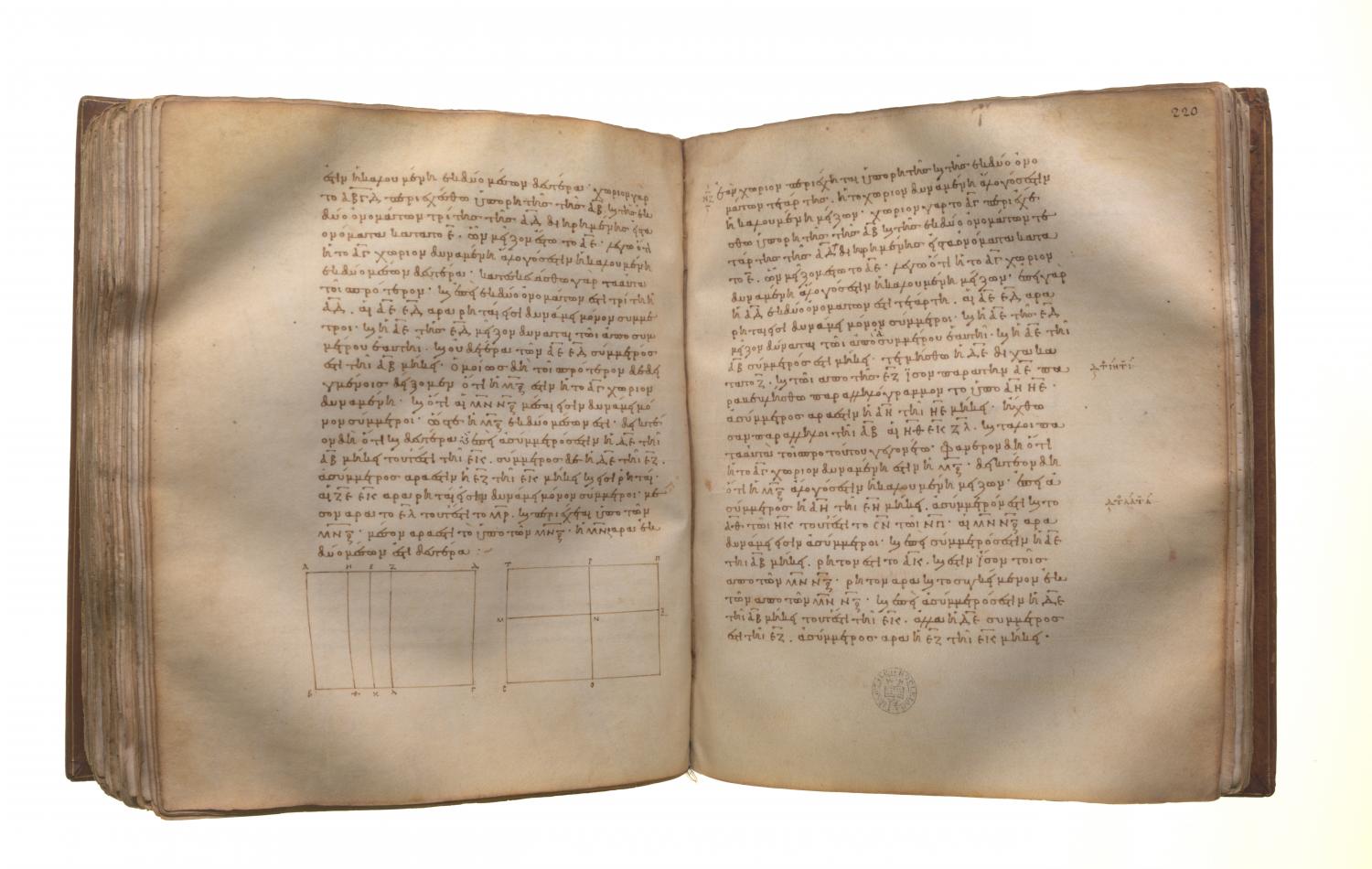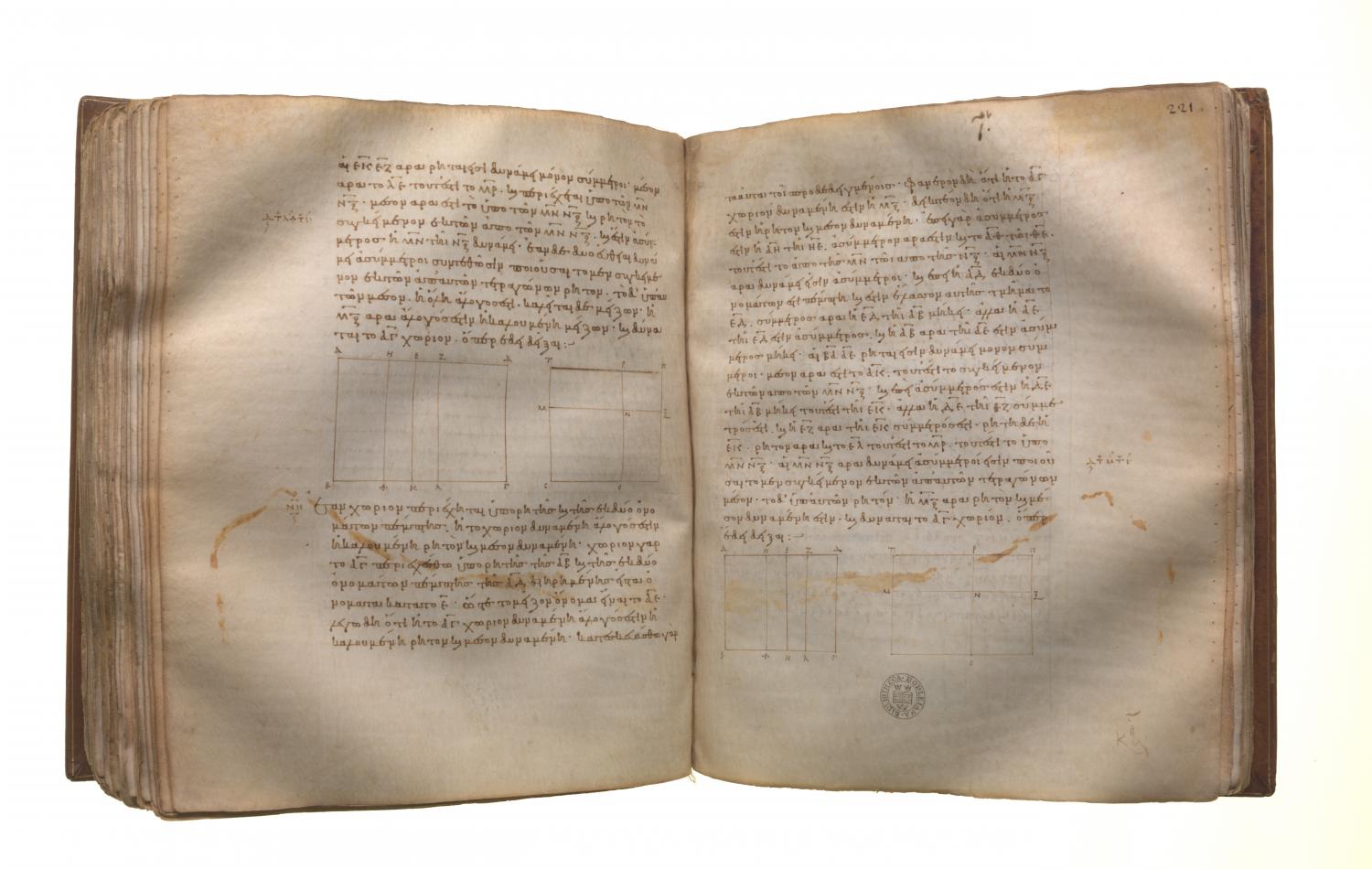Classification of incommensurables: Book 10 Proposition 57
Translations
If an area be contained by a rational straight line and the fourth binomial, the side of the area is the irrational straight line called major. For let the area AC be contained by the rational straight line AB and the fourth binomial AD divided into its terms at E, of which terms let AE be the greater; I say that the side of the area AC is the irrational straight line called major. For, since AD is a fourth binomial straight line, therefore AE, ED are rational straight lines commensurable in square only, the square on AE is greater than the square on ED by the square on a straight line incommensurable with AE, and AE is commensurable in length with AB. [X. Deff. II. 4] Let DE be bisected at F, and let there be applied to AE a parallelogram, the rectangle AG, GE, equal to the square on EF; therefore AG is incommensurable in length with GE. [X. 18] Let GH, EK, FL be drawn parallel to AB, and let the rest of the construction be as before; it is then manifest that MO is the side of the area AC. It is next to be proved that MO is the irrational straight line called major. Since AG is incommensurable with EG, AH is also incommensurable with GK, that is, SN with NQ; [VI. 1, X. 11] therefore MN, NO are incommensurable in square. And, since AE is commensurable with AB, AK is rational; [X. 19] and it is equal to the squares on MN, NO; therefore the sum of the squares on MN, NO is also rational. And, since DE is incommensurable in length with AB, that is, with EK, while DE is commensurable with EF, therefore EF is incommensurable in length with EK. [X. 13] Therefore EK, EF are rational straight lines commensurable in square only; therefore LE, that is, MR, is medial. [X. 21] And it is contained by MN, NO; therefore the rectangle MN, NO is medial. And the [sum] of the squares on MN, NO is rational, and MN, NO are incommensurable in square. But, if two straight lines incommensurable in square and making the sum of the squares on them rational, but the rectangle contained by them medial, be added together, the whole is irrational and is called major. [X. 39]

